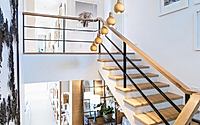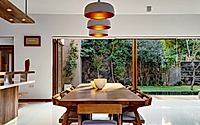Getting the Most Out of Lighting in Your Home
Lighting is one of the most crucial aspects of home design. It affects how we feel, how we perceive our space, and even how productive we are. Getting the most out of your lighting setup means striking a balance between functionality and aesthetics. The right lighting not only makes spaces feel welcoming but can also elevate a room’s style.
A key player in modern lighting design is bent glass, which offers a versatile way to distribute light elegantly and effectively. In this article, we’ll explore strategies for maximizing home lighting and why bent glass fixtures could be the ultimate solution for a stylish and functional lighting system.
Understanding Lighting Layers
Effective lighting requires layering. Lighting professionals categorize lighting into three main types: ambient, task, and accent lighting. Each layer serves a purpose, and combining them appropriately can make your space look more dynamic and adaptable.
Ambient Lighting
Ambient lighting is the foundation of a well-lit room, providing overall illumination. This layer typically involves ceiling-mounted fixtures, such as chandeliers or recessed lights, to create a balanced level of brightness across the space. It’s not meant to highlight anything specific, just to provide enough light for general visibility and comfort.
Task Lighting
Task lighting, as the name suggests, is focused on illuminating specific areas where activities occur. Think of the under-cabinet lights in a kitchen, a desk lamp in an office, or vanity lights in the bathroom. Task lighting should be bright enough to reduce eye strain but also pleasant enough to enhance the space.
Accent Lighting
Accent lighting is where personality enters the equation. This type of lighting adds drama to a room by focusing on particular objects or features, like a piece of artwork, architectural detail, or plant. Accent lighting often includes wall sconces, track lighting, or spotlights, which can add depth and character to the space.
Why Bent Glass Makes a Difference
The use of bent glass in lighting fixtures is an emerging trend that combines aesthetics with functionality. Bent glass involves heating flat glass and carefully molding it into curved, elegant shapes. This material and process can transform lighting in ways that few other materials can match.
Enhancing the Aesthetic Appeal
Bent glass lighting fixtures introduce a luxurious, sophisticated element to any room. The natural curves of bent glass allow light to diffuse softly, creating an elegant atmosphere. Because bent glass fixtures come in various designs—from subtle, barely-there shapes to bold, modern forms—they can match a range of design aesthetics. Their unique appearance can make a statement on its own or add a graceful, understated elegance to the room.
Improving Light Distribution
One of the significant advantages of bent glass in lighting is its ability to distribute light evenly. When light passes through curved glass, it refracts in various directions, dispersing more softly and reducing harsh shadows. This can help avoid overly bright spots and dim areas, creating a balanced glow that is easy on the eyes. The gentle diffusion makes bent glass fixtures ideal for ambient lighting, as they can brighten a room without overwhelming it.
Choosing the Right Bent Glass Fixtures
The versatility of bent glass allows for a wide range of lighting solutions, from ceiling-mounted fixtures to wall sconces and table lamps. Here’s how to incorporate these pieces strategically.
Ceiling Lights
A bent glass chandelier or pendant light can be an eye-catching focal point, especially in spaces like the dining room or living room. Since bent glass diffuses light well, it creates a welcoming glow that enhances these social spaces without creating harsh shadows. Look for designs that reflect your style, whether it’s sleek and modern or intricate and classic.
Wall Sconces
Bent glass wall sconces are excellent for hallways, entryways, or bathrooms, where they can provide ambient lighting while also serving as decorative elements. Sconces with bent glass give off a softer, dispersed light that’s perfect for adding warmth to the room without harsh overhead lighting. You can place them on either side of a mirror in the bathroom or along a hallway to create an inviting, continuous glow.
Table Lamps and Floor Lamps
For task lighting, bent glass table and floor lamps can provide direct light with a diffused edge, creating a comfortable workspace or reading area. The aesthetic of bent glass adds sophistication, whether it’s in a home office, bedroom, or reading nook. These lamps can also serve as accent pieces, blending function with a refined design element.
Placement Tips for Optimal Lighting
While choosing the right fixture is essential, placement is equally important. Bent glass fixtures work best when positioned where they can enhance the room’s natural layout and complement the existing decor.
Dining Room: Position a bent glass chandelier over the center of the table to anchor the space.
Living Room: Use multiple bent glass fixtures, such as sconces or table lamps, to create a warm, layered lighting scheme.
Bedroom: Place bent glass wall sconces on either side of the bed for a chic, functional light that’s easy on the eyes.
Incorporating Bent Glass into Different Styles
Bent glass lighting fixtures work well across a variety of design styles, making them a flexible choice. In modern spaces, sleek, minimal bent glass designs add a subtle, sophisticated glow, while in more traditional spaces, ornate bent glass fixtures can bring a sense of classic elegance. Even in industrial or rustic styles, bent glass lights with dark metal or brass fittings can introduce an interesting contrast and elevate the look.
Conclusion
Lighting is a powerful design element that can transform your home, and incorporating bent glass into your lighting solutions can add both style and function. The soft, diffused light produced by bent glass fixtures creates a balanced, inviting atmosphere that enhances any space. By understanding lighting layers, carefully choosing fixtures, and optimizing placement, you can make the most of your lighting, ensuring that every room feels warm, inviting, and well-designed.
- by Matt Watts







